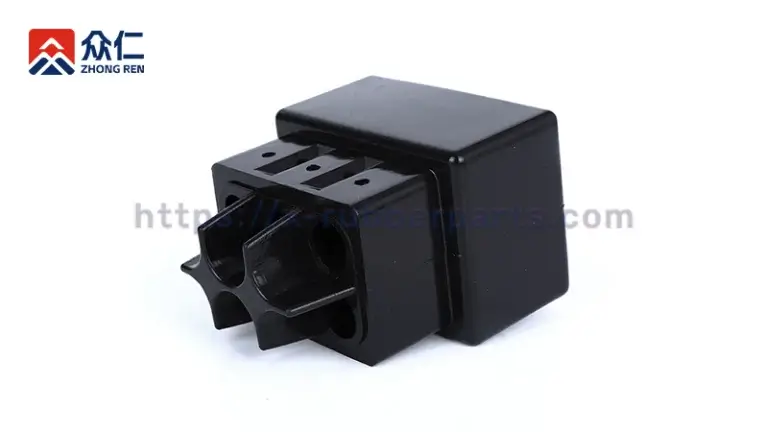

Custom EPDM Molding Product
Custom EPDM Molding Solution
Zhongren is a leading expert in EPDM moulding, specializing in custom-designed irregular or unusual shaped parts tailored precisely to clients’ specifications. With years of experience and deep application knowledge, we deliver reliable, high-performance custom EPDM parts. EPDM molding offers a durable, cost-effective solution with excellent resistance to ozone, UV light, and extreme temperatures, as well as superior color stability and heat resistance, making it a trusted alternative to neoprene rubber.
How Are EPDM Rubber Parts Manufactured?
For custom EPDM rubber molding, Zhongren have different types of molded epdm rubber manufacturing processes depending on your specific product.
- EPDM Rubber Injection Molding
- EPDM Rubber Extrusion Molding
- EPDM Compression Molding
- EPDM Rubber Transfer Molding
- EPDM to Metal Bonding
- EPDM to Plastic Bonding
Successful EPDM molding requires precise control of pressure, temperature, and cure time to ensure full vulcanization. Proper preheating, mold venting, and compound consistency are essential to prevent defects and achieve tight tolerances without deformation.
Common Applications of EPDM Rubber Product
EPDM rubber is ideal for use in vehicles, appliances, buildings, and cable systems thanks to its resistance to UV, heat, and environmental stress.
- Door seal and weatherstripping
- Windshield gasket
- Waterproofing liners
- Vibration dampening pads
- Cable jacketing
- Electrical connectors
- Expansion joints
- Dock fendering
Our Valued-Added Services
- Design and Engineering Support
- Material Testing and Certification
- Surface Finishing and Printing
- Assembly and Sub-Assembly
- Custom Packaging and Labeling
Advantages of EPDM Moulding
- Excellent resistance to heat, ozone, UV, and weathering, making it ideal for outdoor applications.
- Outstanding chemical resistance against acids, alkalis, and polar solvents.
- Good flexibility and elasticity over a wide temperature range (-40°C to 125°C).
- Strong electrical insulating properties.
- Relatively low cost compared to specialty elastomers like silicone or fluorocarbon rubber.
Disadvantages of EPDM Moulding
- Poor resistance to petroleum-based oils, fuels, and hydrocarbons, limiting use in automotive fuel systems.
- Lower tensile strength and abrasion resistance compared to materials like nitrile rubber (NBR) or polyurethane.
- Not suitable for applications requiring high oil and solvent resistance.
FAQ with EPDM Rubber Molding
Can EPDM be colored or customized?
Are there different types of EPDM?
How long does EPDM last?
Typically 20–50 years or more, depending on environmental exposure and maintenance.
How strong is EPDM?
It has moderate mechanical strength with excellent elasticity and durability. It maintains flexibility over a wide temperature range, which allows it to absorb impact and stress without cracking or tearing easily.
How is EPDM bonded to metal?
Is EPDM food grade?
Yes, upon request. We provide food-grade EPDM compounds that comply with FDA 21 CFR 177.2600 and UL standards, produced under an ISO 9001:2015-certified quality system. Custom formulations can meet ASTM D2000 classification as needed.
How does EPDM compare to other rubbers?
EPDM offers excellent weather resistance and wide temperature tolerance (-40°C to 150°C) but has poor oil resistance. Compared to other rubbers like NBR, Silicone (MVQ), Neoprene (CR), Natural Rubber (NR), and Butyl (IIR), EPDM is a mid-cost option ideal for outdoor and sealing applications where weather and ozone resistance are critical, but it is less suitable for oil-heavy environments.



